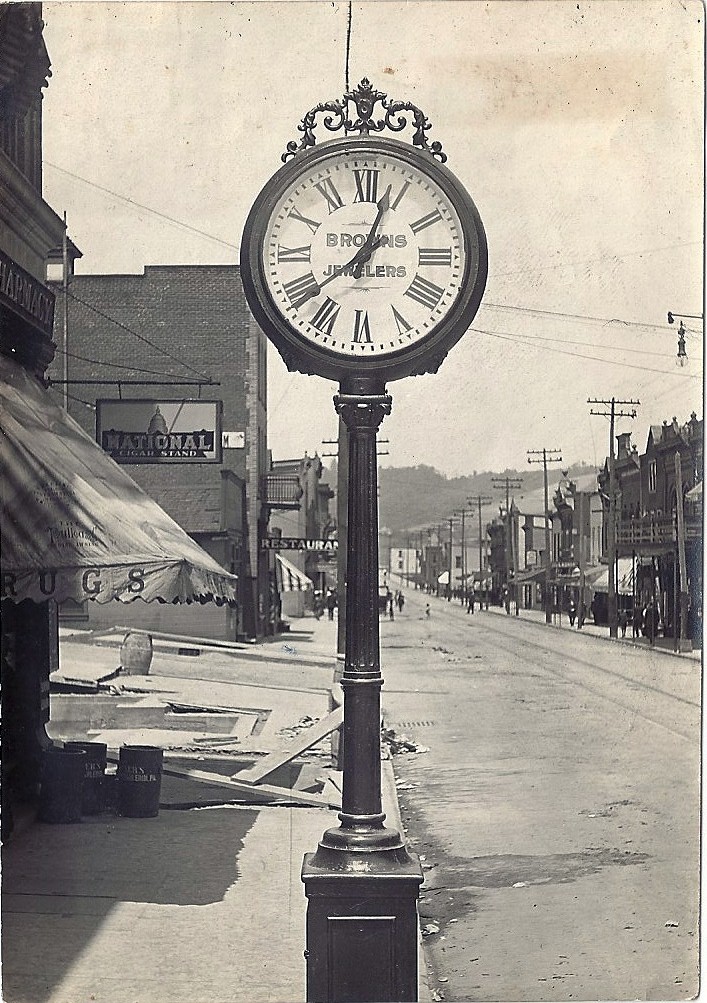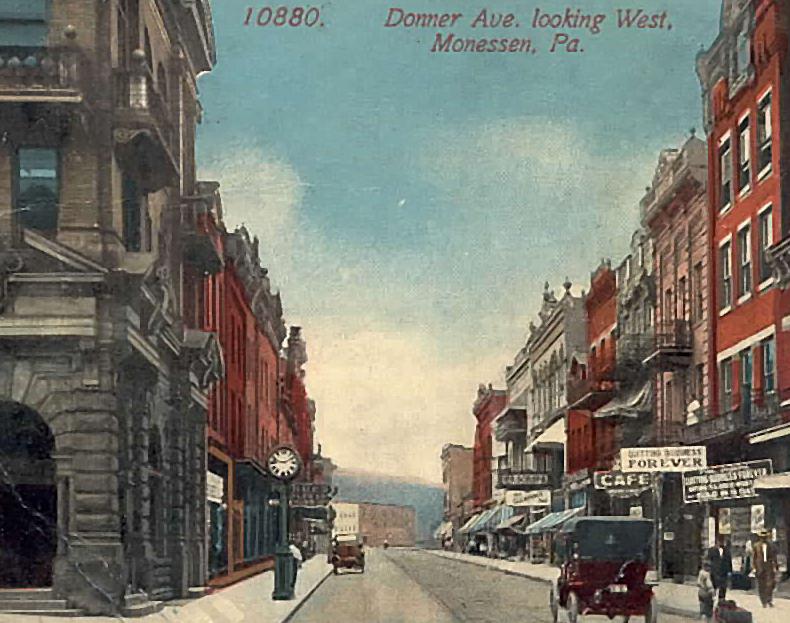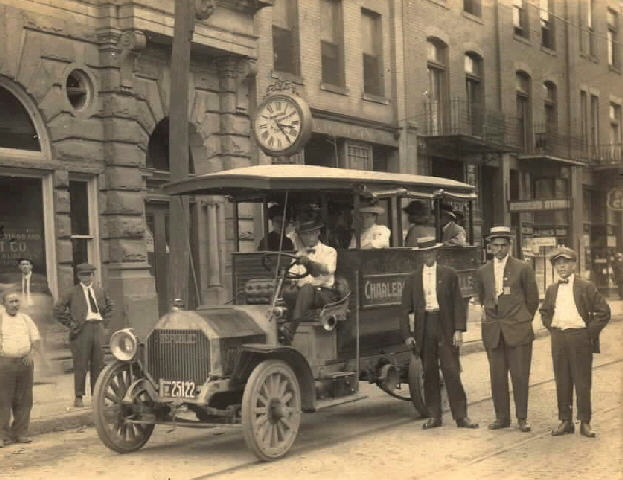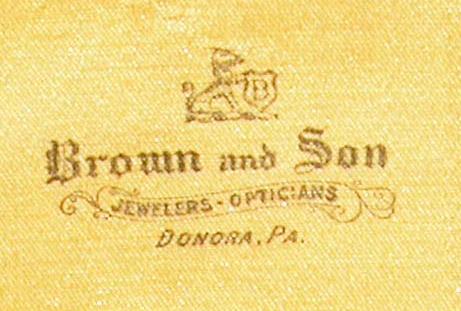


Monessen, PA
E. Howard Clock Co., Seth Thomas Clock Co., Jos. Mayer Bros. and the Brown Street Clock Co. competed in the 'street clock' market.
The Brown Street Clock Company claimed at one time, 7 of 10 street clocks in the U.S. were Browns.
Whether true or not, the Brown company could sell a jeweler a street clock for as little as $175 in about 1910 and give them credit to boot.
Seth Thomas and E. Howard street clock's sticker price was considerably more money at that time.
This webpage attempts to record all the known Brown Street Clocks that continue to provide service throughout the U.S.
Below is the Brown street clock that stood in front of the Brown Jewelry Store
in Donora, PA between 6th and 7th Streets on McKean Ave.



The local paper reported on Dec. 28, 1906 that Benjamin and Walter had purchased a two story brick building on Donner Ave. This partnership split up in Jan. 1911.
A 1909 newspaper article reported the Benjamin had secured an agency of the REO automobile.
It is believed that Benjamin was the inventor and manufacturer of the Brown Street Clocks. His youngest son, Kenneth R., did service work on the street clocks through the years including re-painting the cases and dials and servicing the movements. Other employees included a Mr. Craig who painted the dials and Lester Hunter who assisted Kenneth Brown in service.
The old postcard from about 1915 shows the Donner Ave. Brown Street clock

According to factory literature, "the Master movement is located in the base and runs eight days with one winding. Quality cast brass plates, Graham deadbeat escapement, maintaining power on cable barrel and cast iron motion works mounting bracket."
Electric lights were installed behind dials for illumination and the clock weighed 1,625 lbs. when crated for shipment.
Walter J. Brown died in Nov. 1920 at age 52 and it was reported that his wife, Isabelle C. and children, took over the operation of the Donora store.
Employee, Aderian Ferrier, recalled that the Brown Street Clock Company used the rear portion of this store building as it's warehouse. The iron castings were made by the Old Radiator Works in West Newton, PA. They were brought to the Donora store and the clocks were assembled there.
Lester Hunter recalled that some of the iron castings were also made at the Monessen Foundry.
In 1924, the Brown Street Clock Company was still in business and the name Richard M. Brown appeared on company letterhead. It is uncertain when this company closed, but probably in the mid to late 1920s.

License plate on Republic Truck is a is 1914. Taken in front of Monessen Savings & Trust Bank. The clock is a Brown clock, model #13,400 and is lettered "Monessen Savings & Trust Co."
The Brown Street Clock Company claimed at one time, 7 of 10 street clocks in the U.S. were Browns.
This company could sell a street clock to a jeweler for as little as $175 in about 1910 and give them credit to boot.
Seth Thomas and E. Howard street clock's sticker price was considerably more money at that time.

Pittsburgh Press article from Nov. 13, 1968
The borough street foreman, Edward Hardon said that the power company was asked to turn the power back on, even though the borough did not own the clock.
The article went on to report the owner of the ex-jewelry store property, Joseph White, began picking up the power bills.
White who was an auto dealer, said he wanted to donate the timepiece to the borough. And that he had received a call from one person who wanted it for a clock museum. Another offer was from the students at Donora High School who wanted to maintain it as a class project.
It is unknown what happened to the old street clock. If you know where it is today, please email steveschmidt at hotmail.com
Circa 1915 Brown Street Clock sales catalog listed the following known locations of Brown Street Clocks:
Salt Lake City, Utah
North Platte, Nebraska
Pueblo, Colorado
Cleveland, Ohio
Selina, Ohio
Newark, Ohio....1915
Montpelier, Ohio
Milwaukee, Wisconsin
Hollidaysburg, PA
Nanticoke, PA
Ford City, PA
Sunbury, PA
Donora, PA
Monessen, PA
Clairton, PA
Medina, Ohio
Barnesville, Ohio
Sistersville, West Virginia
We are always searching for more photos and factory literature of Brown Street Clocks. If you have anything, please scan and email to:
steveschmidt at hotmail.com